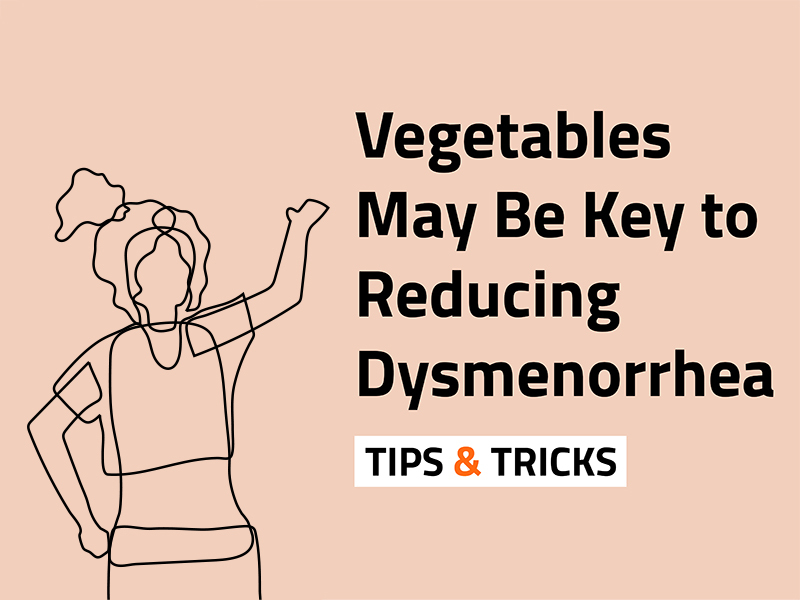There are certain types of diets that can cause or strengthen dysmenorrhea, but is there one that can help improve or even prevent this disorder? Indeed, there is, and it involves fruit and vegetables. One study fed participants one of three diets –– vegetable, protein, or carbohydrate meals –– 48 hours before the onset of menstruation. As many as 73.9% of participants with previously moderate dysmenorrhea who were fed the protein diet and 100% of participants with previously moderate dysmenorrhea who were fed the carbohydrate diet had resulting severe dysmenorrhea. At the same time, participants with previously severe dysmenorrhea were fed a vegetable diet and as many as 69.6% of those study subjects experienced no dysmenorrhea during menstruation.
Another study reviewed the effects of a two-month long vegetable-based diet on numerous parameters including body weight, dysmenorrhea duration and intensity, and premenstrual symptoms. The study discovered that a low-fat vegetarian diet was associated with increased serum sex-hormone binding globulin concentration (meaning more oestrogen was taken out of the system) and reductions in body weight, dysmenorrhea duration and intensity, and duration of premenstrual symptoms.
So, what makes vegetables the wonder food that can have such a pronounced effect on cramps?
First, vegetables are known as the food that fights overall inflammation in the body, and, naturally, this helps to tame the menstrual cramps.
Second, dysmenorrhea is directly related to oestrogen levels. Oestrogens are female sex hormones and they can be understood as a hormonal fertiliser that makes the body’s cells grow. The higher the level of oestrogen, the thicker the lining of the uterus grows in anticipation of pregnancy. Once the pregnancy doesn’t occur, the uterus sheds this lining, and the thicker it is, the more painful the process. Therefore, reducing the overall level of oestrogen helps to avoid creation of thick uterus lining and subsequent dysmenorrhea. Eating a vegetable diet fights higher oestrogen levels on two fronts. Eating a vegetable-heavy diet automatically cuts the person’s consumption of fat, and it has been shown that if a woman eating a typical Western diet cuts her fat consumption in half, her oestrogen levels will fall by 17%. Further reduction in fat intake will lead to further decrease of oestrogen. Additionally, high-fibre vegetables are known to help the body to eliminate oestrogens. When oestrogen is pulled into the intestinal tract for further distribution around the body, the fibre from the vegetables, legumes and whole grains acts as a sponge, soaking the oestrogens up and carrying them out with other waste. It is a natural oestrogen disposal system.
So, what should you do if you suffer from moderate or severe dysmenorrhea?
Add vegetables, especially high-fibre ones, such as squash, carrots and other root vegetables, cruciferous vegetables and every variety of cabbages, all kinds of greens such as spinach, kale, and Swiss chard, to your everyday diet. This will help you to cut down on fat and will bring overall oestrogen levels lower.
Plan your menu especially carefully as menstruation approaches. Eat a vegetable- and fruit-heavy diet, starting 48 hours before menstruation, foregoing animal proteins and sugary foods.
